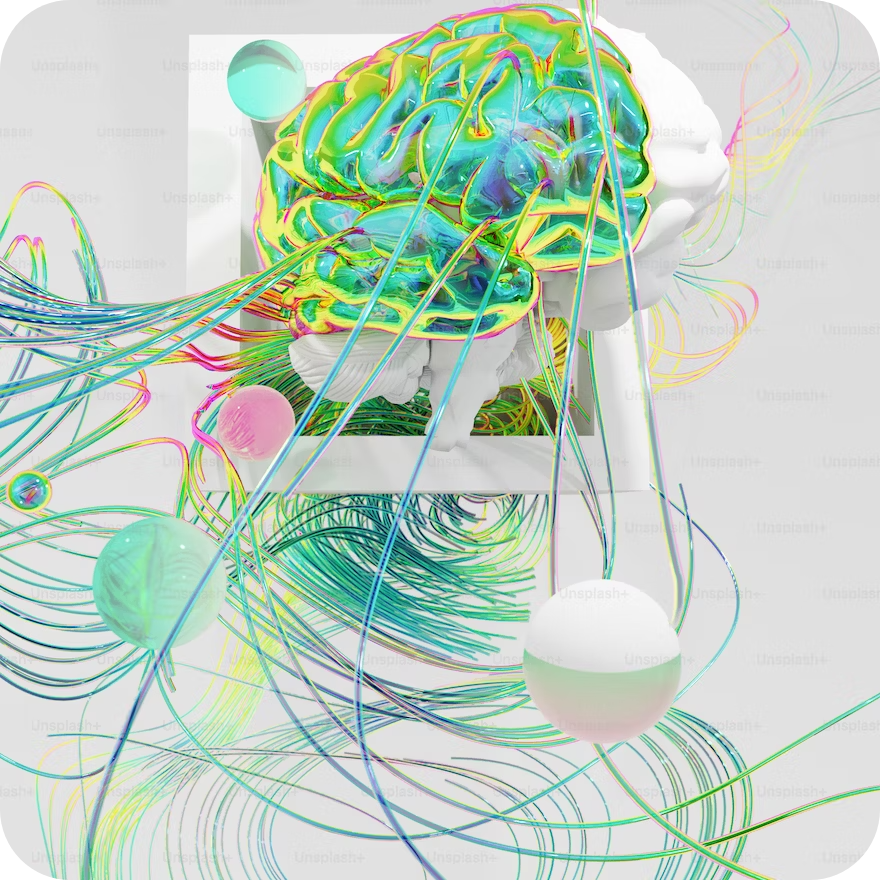NEUROPLASTICITY
HOW TO USE IT SO THAT YOU DON'T LOSE IT
EMBRACING A LIFESTYLE CHARACTERIZED BY BOTH COGNITIVE ENGAGEMENT AND PHYSICAL ACTIVITY CAN YIELD REMARKABLE BENEFITS FOR ENHANCING BRAIN HEALTH AND COGNITIVE PERFORMANCE.
At the heart of these advantages lies an essential concept: brain plasticity, or neuroplasticity. This phenomenon underscores the brain's remarkable ability to adapt in response to life experiences, facilitating learning and skill acquisition through practice.
Neuroplasticity operates on two levels: functional adjustments within neurons and synapses at a molecular level, as well as structural modifications encompassing neuronal morphology, connections, and cellular dynamics.
Although neuroplasticity tends to decline with age, a significant degree of plasticity persists throughout life. Activities that stimulate mental and physical faculties tap into this intrinsic plasticity, fostering adaptations that underpin cognitive performance. This inherent adaptability of the brain presents a promising avenue for enhancing cognitive functions. Let's delve into how we can effectively harness neuroplasticity to elevate cognitive performance.

AMPLIFYING NEUROPLASTICITY THROUGH NOVEL PURSUITS

SLEEP'S ROLE IN FOSTERING NEUROPLASTICITY

THE IMPACT OF PHYSICAL ACTIVITY ON BRAIN PLASTICITY
Physical exercise forms a cornerstone of a holistic lifestyle, benefiting an array of bodily systems, including the brain. Exercise imparts a multilayered impact on brain function, affecting neurotransmitter levels, signaling pathways, cerebral blood flow, and neuronal function.
A central molecule influenced by exercise is Brain-Derived Neurotrophic Factor (BDNF), which stands as a facilitator of neuroplasticity. Animal studies reveal that exercise can enhance synaptic plasticity, while human studies spotlight heightened brain activity, connectivity, and structural metamorphosis triggered by exercise.
Aerobic activity holds sway over gray matter volume and microstructure enhancements within the cortex and hippocampus, bolstering cognitive function. In older adults, exercise demonstrates the potential to expand hippocampal volume, effectively counteracting age-associated atrophy while promoting memory and cognitive performance.

CHRONIC STRESS'S IMPACT ON NEUROPLASTICITY

MINDFULNESS AND RELAXATION AS ANTIDOTES TO STRESS
Meditation and relaxation practices offer a range of mental and emotional benefits, fostering relaxation and diminishing stress. These practices can counteract stress's adverse impact on cognitive performance and neuroplasticity. Mindfulness meditation, in particular, is closely linked to structural brain changes in regions dedicated to awareness, attention, and emotional regulation.
A balanced and engaging lifestyle plays a pivotal role in fostering brain plasticity and enhancing cognitive function. Factors such as mental stimulation, physical engagement, quality sleep, relaxation, and a nourishing diet all contribute to optimizing brain function and nurturing neuroplasticity.
The central premise is to partake in activities that stimulate and nurture the brain, cultivating an environment that nurtures cognitive growth and improvement. Whether through active learning, regular exercise, stress management, or relaxation techniques, the aim is to tap into the brain's innate plasticity to amplify cognitive capabilities and overall well-being.
Supplementing neuronal synaptic formation through products like Pinnacle Mind can further support the brain's adaptability and cognitive prowess.

INSIGHTS
Topics to stimulate your thinking, feeling and achievement.
By Jul 04, 2024
By Sep 29, 2023
By Sep 28, 2023
By Sep 27, 2023
By Aug 19, 2023
By Aug 19, 2023
By Aug 14, 2023







